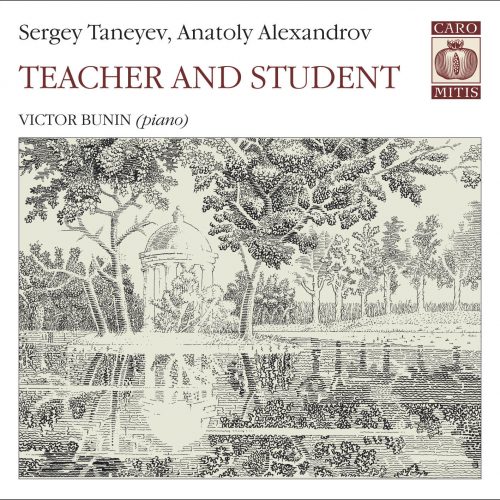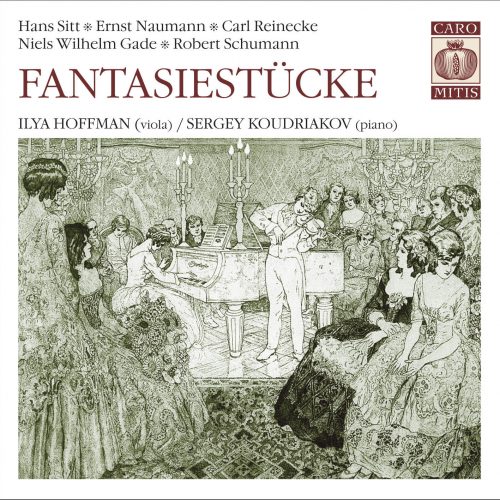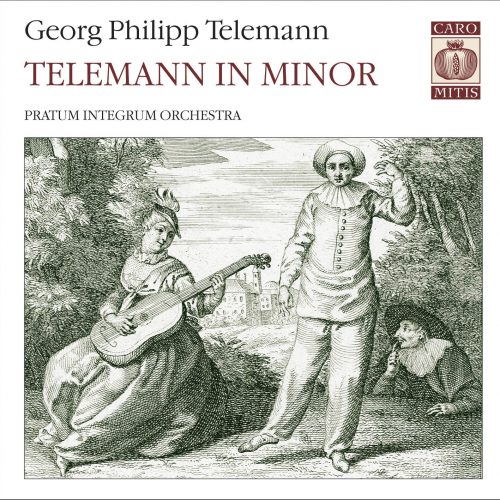According to his contemporaries, Sergey Ivanovich Taneyev was a pianist of extraordinary talent. If composing music and teaching the theory of composition had not taken precedence in his life, he might well have become a concert pianist. Nonetheless Taneyev gave occasional performances throughout his creative career (usually playing his own compositions and those of his teacher, Tchaikovsky). Piano compositions were not an essential part of his oeuvre, and this factor distinguished him from most composer pianists of the 19th and early 20th centuries. Just one such piece was deemed worthy of publication by this self-critical composer (Prelude and Fugue, Op.29, 1910). The others were found in archive material and published as late as 1953 (editors Pavel Lamm and Vissarion Shebalin).
Taneyev’s creative activities peaked in the mid-1890s, accompanied by intensive work on the major sonata and symphony cycles (chamber ensembles, the Symphony in C minor) which comprise most of his heritage as composer. His friendship with pianist Alexander Ilyich Siloti (1863–1945) stimulated him to write more modest pieces for piano. The composer wrote at least three preludes for him, which Siloti performed at concerts.
Tracklist
Please note that the below previews are loaded as 44.1 kHz / 16 bit.Total time: 00:59:20
Additional information
| Label | |
|---|---|
| SKU | CM0052010 |
| Qualities | |
| Channels | 2ch Stereo, 5 Channel Surround Sound, 2ch Stereo & 5ch Surround |
| Artists | |
| Composers | |
| Genres | |
| Recording Software | Merging |
| Recording Type & Bit Rate | DSD64 |
| Recording location | 5th Studio of the Russian Television and Radio |
| Recording Engineer | Erdo Groot, Roger de Schot |
| Producer | Michael Serebryanyi |
| Microphones | Microphones – Neumann km130 DPA (B & K) 4006 ; DPA (B & K) 4011 SCHOEPS mk2S ; SCHOEPS mk41 |
| Digital Converters | Meithner Design |
| Original Recording Format | |
| Instruments | |
| Release Date | September 25, 2015 |
Press reviews
Amazon.Com
This program is thoughtfully put together to showcase two fine but neglected Russian composer-pianists whose lives intersected as teacher and student: Sergei Taneyev (1856-1915) and Anatoly Alexandrov (1888-1982). What impresses me is the selection, which includes Taneyev’s best piano pieces along with Alexandrov’s staple, the Fourth Piano Sonata, and his remarkable but previously unrecorded op. 110, a late masterpiece deserving attention. Overall, there is not a dud or uninteresting piece to be found here.
Like Anton Rubinstein, Taneyev is more often known, if at all, as a formative pedagogue. He was Tchaikovsky’s favorite pupil and later counted among his own composition students a veritable pantheon of greats, including Medtner, Rachmaninov, Lyapunov, Gliere, and Scriabin. This is an important figure in Russian music history, but few of his compositions have survived in the consciousness of the public. Enter the “Prelude in F major,” an effective and beautiful piece written for Siloti. I have heard it played by Joseph Banowetz on Toccata Classics, but Bunin is leagues ahead with his impassioned phrasing and emotional investment. Then there is the “Theme and Variations,” arguably Taneyev’s solo piano masterwork, which bears some stylistic resemblance to Schumann, but is indebted to Tchaikovsky. The somber theme is instantly memorable and goes through many gorgeously lyrical and melodically fetching transformations, concluding with a magisterial fugue that proves Taneyev was indeed an expert contrapuntalist. There is no reason why this substantial 10-minute work should not be played in the concert hall.
Anatoly Alexandrov overshadowed his teacher as a composer, but he is still known only to a few connoisseurs. Alexandrov joined the avant-garde circle of Russian composers active in the early 20th century and his work is heavily influenced by Medtner, Scriabin, and Rachmaninov. The Fourth Piano Sonata is his masterpiece. Hyper-Romantic and melodically inspired, it is bursting with virtuosic and impassioned ideas that could be mistaken for Rachmaninov. And Bunin establishes a benchmark performance here. I thought Hamish Milne on Hyperion was good, but Bunin is better in terms of dynamic control, intelligent pacing, and heart-on-sleeve emotion. Equally significant is the op. 110 preludes, which I have not seen recorded before. Each one is dedicated to an esteemed Russian composer and emulates their aesthetic. Thus, the first “Feinberg” prelude explores intricate piano writing and morbid intensity; the second “Scriabin” is a sensual little poem with lilting chromatic lines; the third “Rachmaninov” is a passionate tour-de-force; the fourth “Medtner” is like a pensive Skazka; lastly the “Epilogue” is Alexandrov’s own dramatic capstone to a wonderful series of homages.
Victor Bunin (b. 1936) is one of the better Russian pianists around today. Not only does he champion worthy and neglected Russian composers, but his technique is so well-rounded and commanding, even in his late seventies. What a fusion of technical mastery and a poetic mind. Considering he studied under Feinberg and has a temperament suited to this kind of repertoire, I deem his performances of Alexandrov as authoritative.
Bottom line: Highly recommended for any pianophile and especially fans of late Romantic Russian piano music. Every piece here is a gem: from Taneyev’s captivating “Prelude in F major” and highly expressive “Theme and Variations” to Alexandrov’s dramatic Fourth Piano Sonata and op. 110 preludes.
Audiophile Audition Review: “ALEXANDROV: Teacher and Student”
A valuable introduction to two Russian masters of the piano.
This is a valuable addition to the catalog—not because the music is indispensible, although it is all finely wrought and immediately appealing. The value of this project is manifold: first, we’re given the opportunity to hear an important composer working in a medium for which he is hardly known. Second, we have a rare chance to hear the music of a composer who bears comparison with twentieth-century Russian Romantics such as Rachmaninoff and Medtner. Third, the concept behind the album—teacher and student—provides much food for thought. For one thing, Taneyev was a great teacher whose students, besides Alexandrov, include just about every important Russian composer (except Stravinsky) who came of age around the turn of the century: Rachmaninoff, Scriabin, Glière, Medtner, and Prokofiev. Not only that, but Taneyev inevitably invites us to look back to his teacher: Piotr Ilyich Tchaikovsky.
So invitingly, pianist Victor Bunin includes an early, Tchaikovsky-influenced work of Taneyev, the Variations in C Minor, written in 1874, while Taneyev was still a student at the Moscow Conservatory. On the surface at least, the work reminds me of Tchaikovsky’s Theme and Variations in F, Op. 19 No. 6. However, whereas Tchaikovsky’s offering is a rather superficial display piece that works itself up to a razzle-dazzle finale, Taneyev’s Variations ends soberly, with a textbook four-voice fugue. While it would be idle to draw any inferences from a comparison of these two works alone, it is (at least in hindsight) significant that Taneyev crowns his set of variations with a fugue, because he came to be known as a master of counterpoint. (In an excerpt from Alexandrov’s memoirs, reproduced in the notes to this recording, the younger composer recalls that Taneyev’s study was dominated by “heavy-built cases of sheet music; one could spot there multivolume editions of Bach and Palestrina.”) Taneyev’s pervasive use of counterpoint and modal melodies gives his music an often archaic sound, plus an austerity that hardly makes us think of his teacher, who didn’t shy away from the heart-on-sleeve gesture. Yet Tchaikovsky’s influence is often heard in Taneyev’s early music, including his symphonies and chamber music. That influence is evident in the Variations. Individual variations sound like Schumann filtered through Tchaikovsky (a Schumann enthusiast of the first order), though a few sound very much like Tchaikovsky unmediated: I’m reminded of the pieces in Tchaikovsky’s The Seasons, written around the same time.
It’s surprising to learn that the Variations and all others of Taneyev’s piano works except the Prelude and Fugue, Op. 29, were unpublished at the time of his death and remained in the archives until as late as 1953! That’s especially hard to grasp given the quality of the Prelude in F Major, written sometime in the 1890s for Alexander Siloti. The work finds Taneyev in a rare poetic vein, despite the fact that the composer couldn’t resist ringing the changes on this quasi-improvisational form: Taneyev’s Prelude introduces two contrasting themes and even an embryonic development of same.
As for Anatoly Alexandrov (1888-1982), he’s one of those remarkable Russian Romantics, like Glière and Bortkiewicz, who carried the legacy of Tchaikovsky, Taneyev, and Glazunov into the second half of the twentieth century. Alexandrov’s earlier music is a bit more challengingly chromatic than his later work; reportedly he softened his style to accord with the aesthetics of social realism. Like Glière, he seems never to have offended the Soviet authorities, though unlike Glière, he kept a low profile during most of his career.
The Fourth Sonata of 1922 must be typical of his earlier style. It’s knottily chromatic, and while the first movement is monumental, heroic, thunderously chordal in the manner of Rachmaninoff, the remainder of the work is more equivocal in its emotions. The second movement’s middle section is austere, contrapuntal, maybe in direct tribute to Alexandrov’s teacher, but it’s also a troubled, haunted sort of music. With the finale, we’re back to the bravely declamatory posture of the opening, or rather, as the marking Invocando indicates, the atmosphere is more supplicatory than declamatory; the movement oscillates between the noisily demonstrative and the quietly reflective. It all makes for a rather unsettled, open-ended kind of conclusion, probably reflective of the troubled times in which the work was written.
Alexandrov’s Five Pieces from 1979 are tributes to four colleagues and fellow students: Samuil Feinberg (Prelude), Scriabin (A Vague Image), Rachmaninoff (Etude), and Medtner (Fairy Tale). The four portraits are capped by an Epilogue. Alexdranov chooses forms that are intimately associated with each of composers, but the music is evocative rather imitative. It’s a moving gesture that produced four beautifully turned little pieces, but given the date of composition, there’s a bittersweetness to the work, as Alexandrov looks back down the long years toward the heyday of Russian Romanticism.
Pianist Victor Bunin (b. 1936) has very direct connections to the music he plays, having studied at the Moscow Conservatory with one of Alexandrov’s heroes, Samuil Feinberg, and having acquired his love for the latter-day Russian Romantics by way of his father, Vladimir Bunin, a student of Alexandrov. Bunin’s understanding and sympathy are evident throughout the program, and fortunately he has all the technique needed to meet the big demands of Alexandrov’s rawboned Sonata. As usual, Caro Mitis supplies exemplary piano sound, working together with the Polyhymnia crew. This is a superb introduction to the music of Alexandrov, as well as an area of Taneyev’s production that is, without justice, virtually unknown.
Only logged in customers who have purchased this product may leave a review.






Reviews
There are no reviews yet.